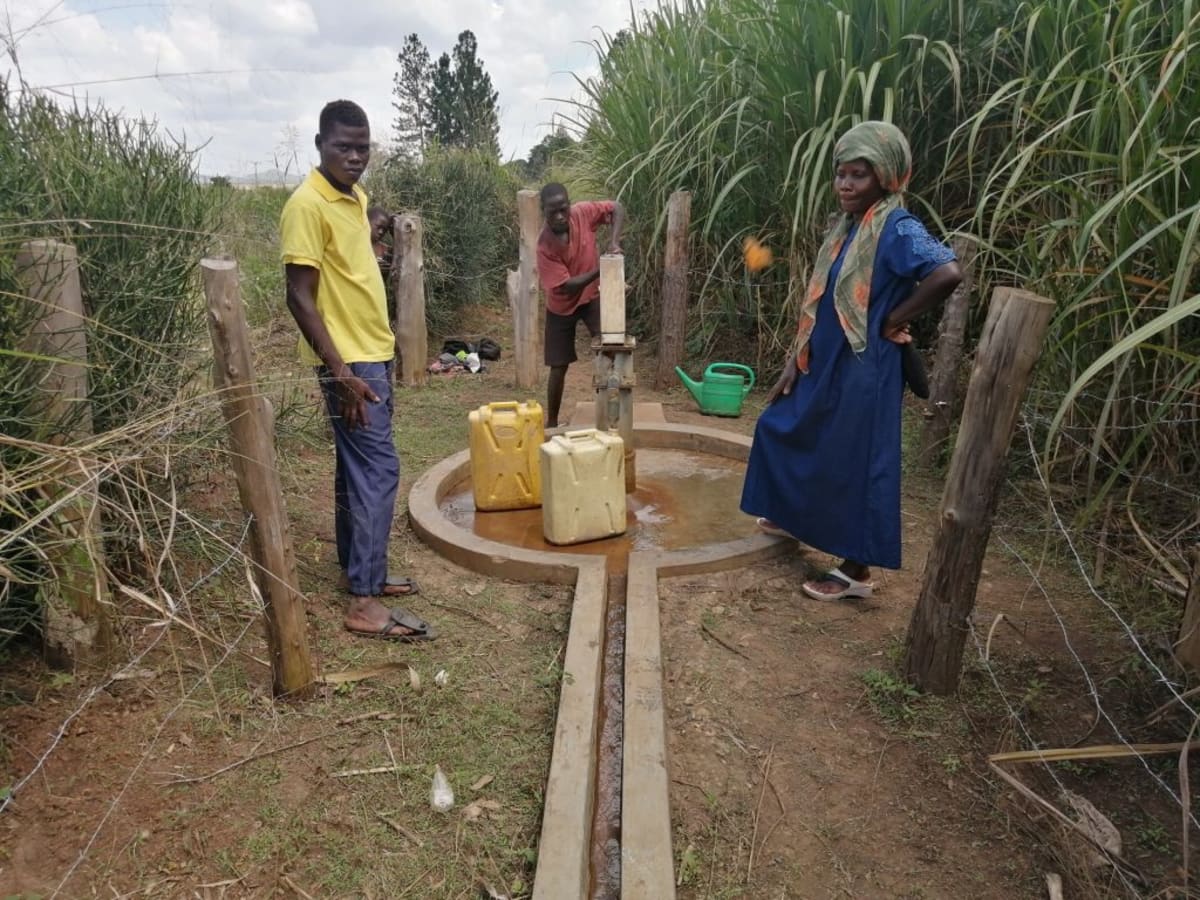Rwenkole village's borehole well has not been functioning for the last three years. Since then, the 200 community members have been forced to use either a contaminated, shallow, hand-dug well on the outskirts of the community or the local swamp.
Fred Aikobwa, a 13-year-old boy, said, "The only water source we use in this village is the hand-dug well near the swamp. When my mother sends me for water, I always find other children and even the elders bathing at the shores. The water sometimes changes color when we boil or use it for cooking, but we are now used to it. This has affected me many times. I suffer from waterborne diseases and skin rashes that make me go a very long distance to the health center for treatment. Then I am not able to even support my mother in the gardens."
A resident of Rwenkole, Mr. James Baguwa, described the water challenges faced by the community. "This community does not have any protected well, except one borehole which has not been functioning for almost 3 years now. The only other useable source is a shallow well which is in the neighboring village. People usually fetch water there in the evenings between 4 PM to 7 PM, and that's when you find very long queues, overcrowding, at times some people go home without water."
The village has an alternative open water source, Musoma Swamp, used by people at the extreme ends of the village.

"This is also where people bathe and the dumping place for waste products for the crude waragi (alcohol)," James continued. "People have reported several complaints of stomach problems, malaria, and typhoid, which affects their production level. They spend a lot of money and time getting medication."
Here’s what we’re going to do about it:
Rehabilitated Well
We are going to restore water to the broken-down borehole. Since this water point is located at the center of the village and easily accessible by the majority of people, unlike the springs which are located at the far ends of the village, when this borehole is restored to its original status, it will provide the community with easy access to clean and safe water. We will remove the old pump, clear out the well, reinstall a new stainless steel pump, and build a new well pad to protect the water.
Training
Training’s main objectives are the use of latrines and observing proper hygiene practices since these goals are inherently connected to the provision of clean water. Open defecation, water storage in unclean containers, and the absence of handwashing are all possible contaminants of a household water supply. Each participating village must achieve Open Defecation Free status (defined by 1 latrine per household) before the pump installation for a shallow hand-dug well.
This social program includes the assignment of 1 Community Development Officer (CDO) to each village. The CDO encourages each household to build an ideal homestead that includes a latrine, handwashing facility, a separate structure for animals, rubbish pit, and drying rack for dishes.
We also implement the Community-Led Total Sanitation (CLTS) approach with each of our village partners. This aims to improve the sanitation and hygiene practices and behaviors of a village. During these sessions, village leaders naturally emerge and push the community to realize that the current practices of individual households – particularly the practice of open defecation – are not only unhealthy but affect the entire village. CLTS facilitates a process in which community members realize the negative consequences of their current water, sanitation, and hygiene behaviors and are inspired to take action. Group interactions are frequent motivators for individual households to build latrines, use the latrines, and demand that other households do the same.
Improved Sanitation
The aim is that all households own an improved latrine. Many households do not use a latrine but use the bush. Due to open defecation, feces are spread all over the village. This leads to waterborne diseases and contamination of groundwater and surface water. Our aim is that the community is able to live a healthy life free of preventable diseases. We endeavor that at the end of our presence in the community, people will have both access to sustainable, clean water and access to sanitation. We have now organized families to form digging groups for latrine construction, and empowered them with tools they will need.

 Borehole Well and Hand Pump
Borehole Well and Hand Pump





























